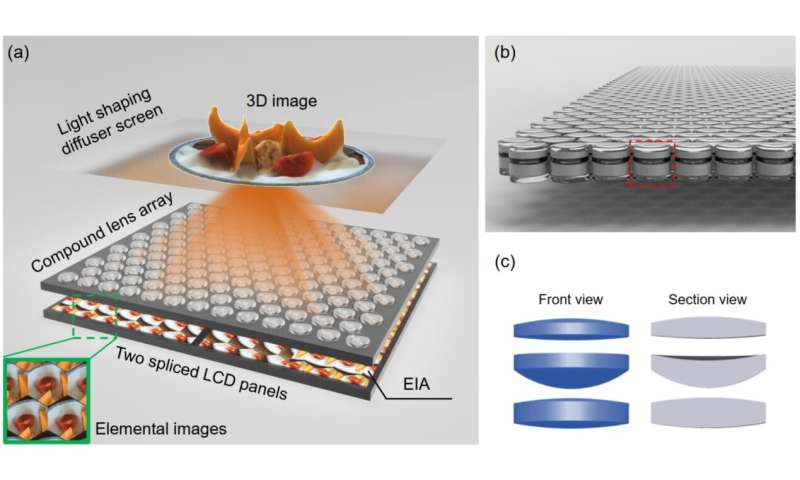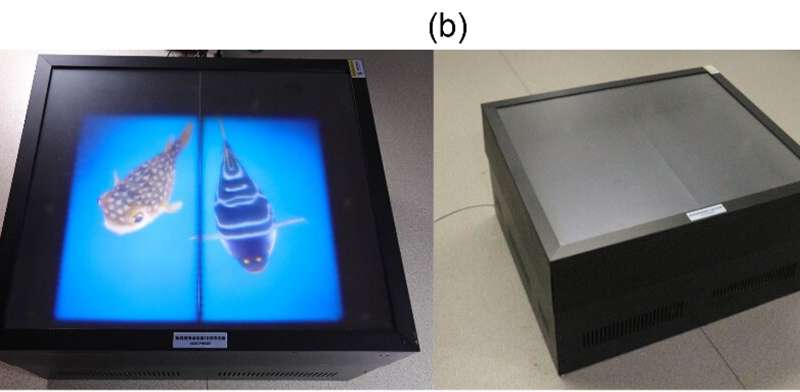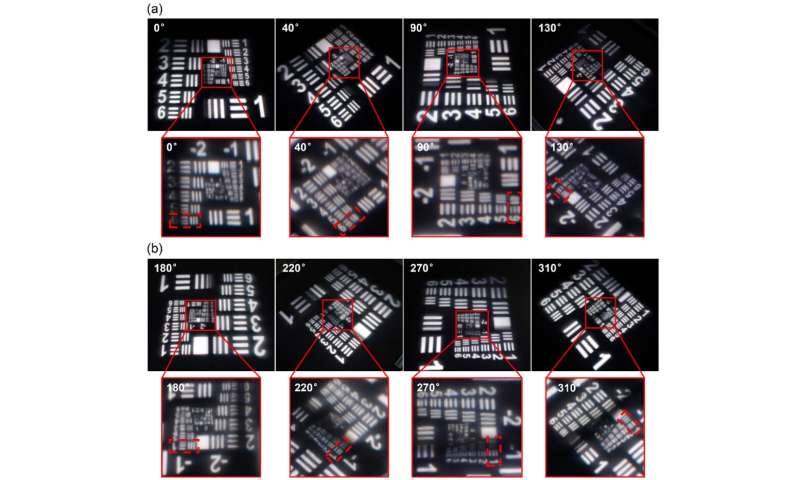A brand-new display form: integral imaging-based tabletop light field 3D display with large viewing angle

Light field 3D display is an innovative glasses-free 3D display technology that provides a more accurate reconstruction of 3D information than 2D and traditional 3D displays. With its ability to produce realistic, vivid, and intuitive 3D images, it has a good potential for development. In particular, the tabletop light field 3D display provides a new display form that combines the features of a real-world tabletop and a digital 3D display. This allows users to interactively share and view 3D images while sitting or standing around the display for collaborative work and interaction. This technology has potential for applications in the fields of electronic sand tables, conference, tabletop games, and so on.
The key to a good 3D tabletop viewing experience is achieving a large 3D viewing angle in the radial direction, which enables users to view correct 3D images from large oblique viewing positions without having to cling to the table. Additionally, correct perspective and parallax in the radial direction are also essential. However, a large radial viewing angle and correct radial perspective and parallax are still out of reach in current research results due to limited spatial information.
Fortunately, by employing light field 3D display technology with full parallax, it is possible to achieve correct perspective and parallax in the radial direction. By developing a control scheme for reconstructed light rays that allow for a large viewing angle, it is possible to achieve both a large viewing angle and correct perspective and parallax in the radial direction simultaneously. The authors of this article report a tabletop light field 3D display based on integral imaging. This work achieved a large radial viewing angle of 68.7° in a large display size of 43.5 inches, with smooth and correct perspective and parallax in the radial direction.

The authors have developed a compound lens array with a large relative aperture based on the discrete light field reproduction concept in integral imaging. This lens array modifies the direction of light rays emerging from 2D display pixels in a wide range of space, ensuring that light emerging from 3D image points exits at a large angle and then reaches the human eyes around. The tabletop light field 3D display comprises three main components, namely an ultra-high-resolution LCD panel with 7680 × 8640 pixels, a compound lens array consisting of thousands of compound lens units arranged in a regular hexagonal pattern, and a light shaping diffuser screen, as shown in Fig. 1. Each compound lens unit contains three lenses arranged along a common axis, and the compound lens array design focuses on balancing the parameters of depth of field and 3D spatial resolution, which are constrained by the 3D viewing angle. Additionally, the imaging quality is superior at large field angles compared to central field angles.
In addition to developing the large viewing angle tabletop light field 3D display, the authors also report a light field capture model. Unlike the traditional rectangular plenoptic maps, this model features a parallelogram shape, with inclined lines representing the parallax images captured by the cameras. The capture model serves as theoretical guidance for 3D rendering technology based on backward ray-tracing.

The authors built a prototype of the tabletop light field 3D display, as shown in Fig. 2. The prototype offers a radial 3D viewing angle range of −34.4° to 34.3°, resulting in a total radial 3D viewing angle of 68.7°.
To quantitatively demonstrate 3D display performance at large viewing angles, the authors reproduced the USAF-1951 resolution test chart using their display prototype. As shown in Fig. 3, the 3D resolution almost remains consistent as the circumferential angle increases under the same radial viewing position. This indicates that the 3D resolution level remains stable, highlighting the display's reliability and suitability for the use of requiring a large viewing angle.
More information:
Yan Xing et al, Integral imaging-based tabletop light field 3D display with large viewing angle, Opto-Electronic Advances (2023). DOI: 10.29026/oea.2023.220178
Provided by Compuscript Ltd